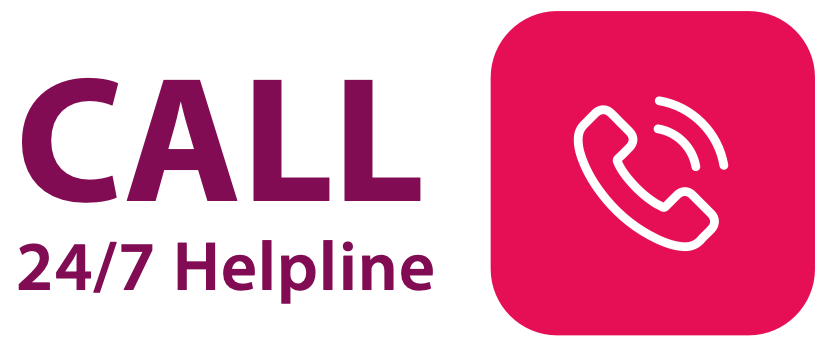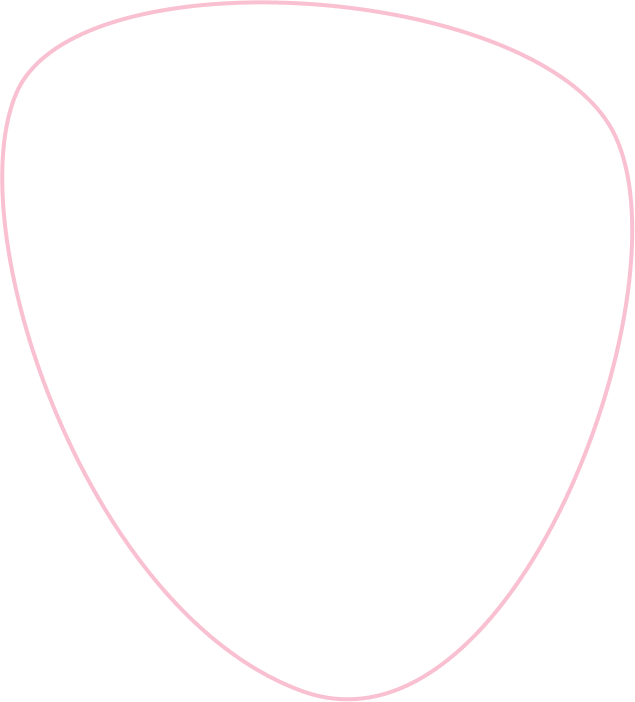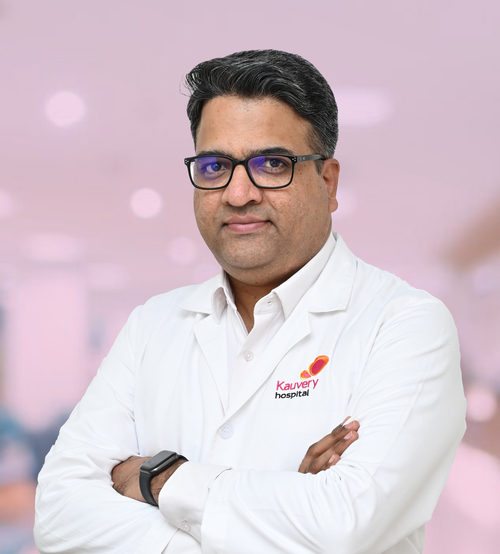




At Kauvery Hospital, we bring you a paradigm shift in cardiac care with our cutting-edge Transcatheter Aortic Valve Implantation (TAVI), also known as Transcatheter Aortic Valve Replacement (TAVR) procedure.

TAVI/TAVR offers a less invasive alternative to open-heart surgery, promoting faster recovery time.
Suitable for individuals considered high risk for traditional surgery, providing a safe and effective alternative.
Advanced imaging technology ensures precise placement of the new valve.
Patients undergoing TAVI/TAVR experience shorter hospital stays and faster recovery periods compared to conventional surgical options.
TAVI/TAVR procedure at Kauvery Hospital involves collaboration among experts in cardiology, interventional radiology, and cardiac surgery.
Kauvery Hospital stays at the forefront of innovation, incorporating the latest advancements in TAVI/TAVR procedures for improved patient outcomes.
TAVI/TAVR helps you unlock a new era in cardiac wellness. TAVI surgery, or Transcatheter Aortic Valve Implantation, a.k.a TAVR surgery or Transcatheter Aortic Valve Replacement is a breakthrough procedure that transforms cardiac care. This minimal invasive technique addresses aortic valve issues without the need for traditional surgery, ensuring a renewed lease on life.

TAVI/TAVR comes in various types, each designed to address specific conditions and patient profiles. Here are the primary types:
Description: In this procedure, a balloon-expandable valve is guided to the aortic position using a catheter. The balloon is then inflated to secure the new valve in place.
Suitability: Ideal for patients with aortic stenosis or regurgitation, especially those with anatomical considerations that require precise valve placement.
Description: Self-expanding valves are constructed to automatically expand once in position. They are delivered through a catheter, providing a secure fit within the aortic valve.
Suitability: Suited for patients with aortic valve issues, particularly those with challenging anatomies where precise placement is crucial.
Description: This approach involves accessing the heart through a small incision between the ribs (apex) and delivering the TAVI/TAVR device directly to the aortic valve.
Suitability: Considered for patients who may not be suitable for the transfemoral approach due to vascular issues or other anatomical considerations.
Description: The TAVI/TAVR device is delivered through the femoral artery, typically accessed via a small incision in the groin.
Suitability: Commonly used for patients with suitable femoral arteries, providing a less invasive option compared to other approaches.
Description: Accessing the carotid artery (neck) provides an alternative route for delivering the TAVI/TAVR device to the aortic valve.
Suitability: Considered for patients with femoral or other vascular issues, allowing a different access point for TAVI/TAVR.

You may need TAVI/TAVR in case you’re experiencing the following symptoms:

TAVI/TAVR is an effective intervention for treating a range of conditions related to the aortic valve. It is commonly recommended for patients dealing with:

Narrowing of the aortic valve, restricting blood flow.

Backflow of blood into the heart due to a leaky aortic valve.

Conditions where the aortic valve deteriorates over time.

Individuals who may not be suitable candidates for traditional open-heart surgery.

Patients with anatomical considerations that make traditional surgery difficult.

Especially beneficial for older individuals who may not tolerate open-heart surgery well.

At Kauvery Hospital, advanced technology is used in Transcatheter Aortic Valve Implantation/Replacement (TAVI/TAVR) to provide Innovative care for patients with severe aortic stenosis. Our Forefront methods ensure precise, minimally invasive treatments that lead to quicker recoveries and better outcomes.
Our High-tech imaging technology ensures accurate placement of the valve.
Detailed Explanation:
At Kauvery Hospital, we use advanced imaging techniques like 3D echocardiography and CT scans to guide the TAVI/TAVR procedure with exceptional accuracy.
These advanced imaging tools provide detailed views of the heart, allowing our doctors to place the new valve precisely where it’s needed.
This precision reduces the risk of complications, minimises the duration of the procedure, and enhances overall outcomes.
By employing the latest in imaging technology, we can tailor each procedure to the patient's unique heart anatomy, ensuring a personalised and highly effective treatment for severe aortic stenosis.
We use minimally invasive methods to reduce recovery time and improve patient comfort.
Detailed Explanation
Our TAVI/TAVR procedures are designed to be minimally invasive, requiring only small incisions or even just a puncture in the leg.
This approach significantly reduces bodily trauma compared to traditional open-heart surgery, resulting in less pain and a lower risk of infection.
Patients benefit from a much faster recovery time, often returning to their daily activities within a few days.
At Kauvery Hospital, our priority is to enhance patient comfort and accelerate healing through these advanced, minimally invasive techniques, ensuring a smoother and quicker path to recovery.
We use the latest valve technology to ensure long-lasting results.
Detailed Explanation
At Kauvery Hospital, we employ the latest in valve technology for our TAVI/TAVR procedures. These advanced valves are made from durable materials that offer superior performance and longevity compared to older models.
Designed to accommodate various patient anatomies, these modern valves ensure a proper fit and optimal function.
By using these high-quality valves, we provide our patients with a durable, efficient solution that significantly improves their quality of life and reduces the likelihood of future procedures.
Our commitment to using the best valve technology ensures that our patients receive the highest standard of care available.
Intravascular ultrasound imaging provides real-time, high-resolution images of the blood vessel's internal structure, allowing for better assessment of the severity and characteristics of the stenosis.
Digital subtraction angiography (DSA) systems with advanced imaging capabilities enable interventional radiologists to visualise blood flow dynamics and accurately assess the results of fistuloplasty in real-time.
Pre-procedural 3D printing and modelling techniques allow for the creation of patient-specific vascular anatomical models, that helps optimise procedural efficiency and outcomes.
At Kauvery Hospital, advanced technology is used in Transcatheter Aortic Valve Implantation/Replacement (TAVI/TAVR) to provide Innovative care for patients with severe aortic stenosis. Our Forefront methods ensure precise, minimally invasive treatments that lead to quicker recoveries and better outcomes
Our High-tech imaging technology ensures accurate placement of the valve.
Detailed Explanation:
At Kauvery Hospital, we use advanced imaging techniques like 3D echocardiography and CT scans to guide the TAVI/TAVR procedure with exceptional accuracy.
These advanced imaging tools provide detailed views of the heart, allowing our doctors to place the new valve precisely where it’s needed.
This precision reduces the risk of complications, minimises the duration of the procedure, and enhances overall outcomes.
By employing the latest in imaging technology, we can tailor each procedure to the patient's unique heart anatomy, ensuring a personalised and highly effective treatment for severe aortic stenosis.
We use minimally invasive methods to reduce recovery time and improve patient comfort.
Detailed Explanation
Our TAVI/TAVR procedures are designed to be minimally invasive, requiring only small incisions or even just a puncture in the leg.
This approach significantly reduces bodily trauma compared to traditional open-heart surgery, resulting in less pain and a lower risk of infection.
Patients benefit from a much faster recovery time, often returning to their daily activities within a few days.
At Kauvery Hospital, our priority is to enhance patient comfort and accelerate healing through these advanced, minimally invasive techniques, ensuring a smoother and quicker path to recovery.
We use the latest valve technology to ensure long-lasting results.
Detailed Explanation
At Kauvery Hospital, we employ the latest in valve technology for our TAVI/TAVR procedures. These advanced valves are made from durable materials that offer superior performance and longevity compared to older models.
Designed to accommodate various patient anatomies, these modern valves ensure a proper fit and optimal function.
By using these high-quality valves, we provide our patients with a durable, efficient solution that significantly improves their quality of life and reduces the likelihood of future procedures.
Our commitment to using the best valve technology ensures that our patients receive the highest standard of care available.
Meet Our Pioneering Interventional Cardiologists

Senior Consultant - Interventional Cardiology

Senior Consultant - Interventional Cardiology



Consultant Cardiothoracic and Vascular surgery
I have been visiting Dr. Krishna Shaw since my first delivery and now the second one. Extremly satisfied with her treatment. she listens to all our problems and suggests the course of action patiently.
All the doctors and staff is very good. Special thanks to Mr. Nagendra (patient care) who has taken care a lot.
I was admitted at Kauvery hospital. Everything is best here. The service , food , facilities, bedding , rooms , OT and most importantly dr Dhyaneshwar. I had a surgery and everything was world class